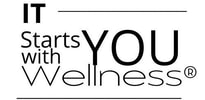1.3 (A) Muscle Tension
Muscle Tension: Causes, Where it's Felt:
Muscle tension: is a state of which the muscles are semi-contracted, not fully contracted, but semi-contracted. That tightness we feel in the body, is our muscles in a semi-contracted state.
What Causes Muscle Tension?
These are the two major sources:
1. Tension from overworked muscles
2. Tension caused by stress
Where Can Tension Occur in the Body?
The most common place for muscle tension to occur is the neck and shoulder area, especially for women.
Other areas for muscle tension to occur:
1. Jaw
2. Neck
3. Belly
4. Hips
But being that we are all different, muscle tension can really show up anywhere. Take a moment to think about where tension sits in your body.
Where do you feel the most tension?
Stress is the key factor in creating muscle tension in our body. Muscle tension will stay with us until the stress is resolved.
If stress doesn’t get resolved, it can turn into chronic stress. This is a state of prolonged tension, which can lead into fears, causing anxiety, and even panic attacks.
Have you ever noticed that when you are stressed or anxious that your body is tense?
So why does our body tense up in these situations? And how could stress lead into anxiety, and even panic?
To answer these questions, let’s look a little deeper into how the mind and body work together.
Muscle tension: is a state of which the muscles are semi-contracted, not fully contracted, but semi-contracted. That tightness we feel in the body, is our muscles in a semi-contracted state.
What Causes Muscle Tension?
These are the two major sources:
1. Tension from overworked muscles
2. Tension caused by stress
Where Can Tension Occur in the Body?
The most common place for muscle tension to occur is the neck and shoulder area, especially for women.
Other areas for muscle tension to occur:
1. Jaw
2. Neck
3. Belly
4. Hips
But being that we are all different, muscle tension can really show up anywhere. Take a moment to think about where tension sits in your body.
Where do you feel the most tension?
Stress is the key factor in creating muscle tension in our body. Muscle tension will stay with us until the stress is resolved.
If stress doesn’t get resolved, it can turn into chronic stress. This is a state of prolonged tension, which can lead into fears, causing anxiety, and even panic attacks.
Have you ever noticed that when you are stressed or anxious that your body is tense?
So why does our body tense up in these situations? And how could stress lead into anxiety, and even panic?
To answer these questions, let’s look a little deeper into how the mind and body work together.
